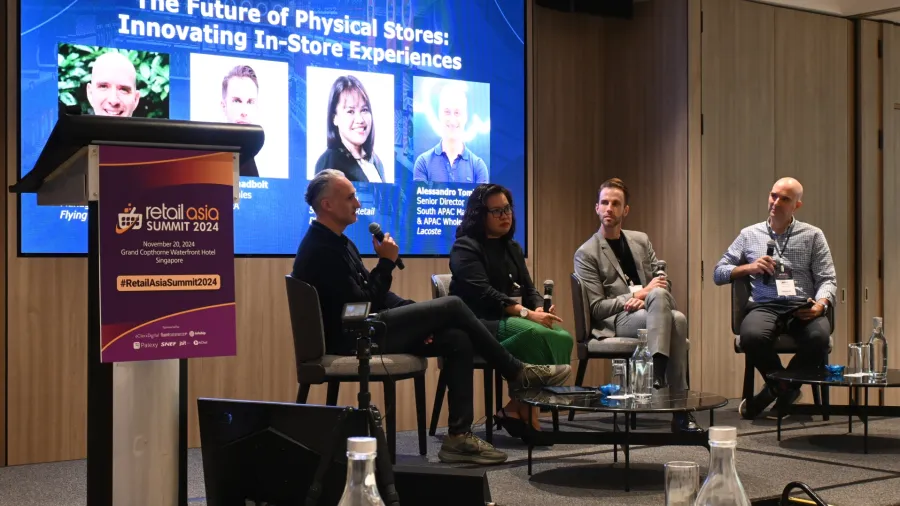
Retail store facelift could drive sales
Remodelling can aid engagement and improve customer satisfaction.
Retailers should reimagine and rebuild their physical stores to make products more visible, improve the shopping experience and create an inviting ambience that could drive sales, industry leaders told the recent Retail Asia Summit 2024 in Singapore.
Remodelling can drive engagement and improve customer satisfaction, according to panellists led by Abigail Beja, head of retail at Shilla Travel Retail Pte Ltd, Alessandro Tomio, a senior director at Lacoste, Frankie Shadbolt, regional sales lead for Southeast Asia at H&M Hennes & Mauritz AB, and moderator Mario Braz de Matos, co-founder at Singapore-based branding consulting firm Flying Fish Lab.
Beja, whose stores are scattered around Singapore’s Changi Airport, said they drew inspiration from China’s vending machine on wheels to attract consumers at the airport. “We had this claw machine outside of the store and everyone was trying to get in line to experience it.”
People who kept returning to the store to redeem points led to an 80% sales conversion, she pointed out.
Shadbolt said flexibility is an important factor in H&M’s layouts because it lets them create spaces for pop-ups where they can host events and highlight their latest campaign garments.
Pop-up shops generate as much as $80b in yearly revenue, and their global market value will exceed $95b by 2025, according to a report by Virginia-based Capital One Financial Corp.
“This also enables localisation, depending on what country we are in,” Shadbolt said, noting that the layout of their store along Orchard Road in Singapore is much more open, which made it easier for their staff to connect with customers and their products.
Tomio, for his part, said increasing visibility of footwear with enhanced sitting areas has helped Lacoste attract younger consumers to their physical stores. He added that hanging clothes instead of displaying them folded has boosted sales.
“This new way of displaying clothes made consumers interact much better with the product and made them more aware of how it was designed,” he said.

















 Advertise
Advertise





